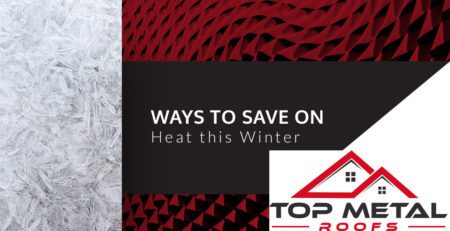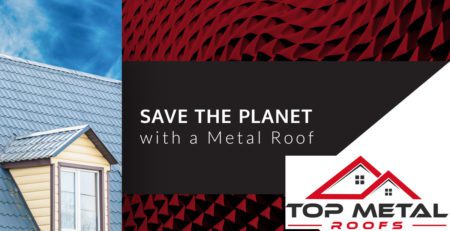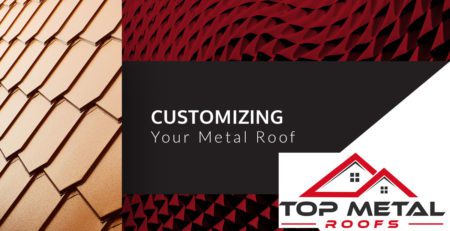Types of Metal Roofing: Guide to Styles, Colors, Materials
Types of Metal Roofs and Roof Styles, Colors, Materials
Metal roofing is the most functional and attractive choice for residential and commercial applications. It is lighter, cheaper to maintain and more durable than other roofing materials. Metal is available in a wide range of styles, designs, colors, and materials.
The term metal roofing describes a wide variety of products and your choice of material depends on cost, property locations, durability, and functional requirements. Additionally, selecting the types of metal roofing most suitable for your local climate could translate to significant savings when replacing your roof or installing a new one.
Types of Metal Roofing Materials
Metal roofing is available a wide range of materials.
Copper
Copper is one of the most attractive metal roofing options due to its blue-green patina formed after years of exposure. While it can be pre-patinated, most buyers prefer natural patination that has a luxurious verdigris appearance. Under ideal conditions, copper can last for more than a century with minimal maintenance.
Copper is often used for accents where a touch of elegance is required and rarely on entire roofs. It is fire resistant, favors snow shedding and is a 100% recyclable, green roof option. It is the quietest and softest metal roofing material whose softness and malleability make it solder well and easy to work with.
Cons of copper roofing
Copper is the most expensive metal roofing material. Due to its soft nature, it is prone to expansion and dents with temperature swings and damage by hailstones. Additionally, after extended exposure to oxygen, copper forms a patina which may be unappealing to some people. Due to the patination, water runoff from copper roofing stains its path.
Zinc
Zinc is among the most common natural elements. It is often used for roofing because it is stylish, has a unique aesthetic appeal and it is corrosion resistant. However, it is used more as a component in different alloys. It is highly durable and uses its patina to self-heal and maintain its strength for over 100 years.
You can use untreated zinc in both coastal and inland roofing. Its malleability allows you to create elaborate roof designs. Since zinc has the lowest melting point, its production requires little energy which makes its production energy efficient. Zinc is also a 100% recyclable, green metal.
Cons of zinc
If left unpainted over time, zinc patinas to a green/blue appearance and leaves an unappealing chalky residue along areas of water flow. Its soft nature makes it damage easily from hailstones or strong winds. Furthermore, zinc is very expensive and to maximize its benefits, you will require expert installation.
Aluminum
This is a lightweight, durable material that you can use when putting up versatile, creatively designed roofs. It is corrosion resistant, largely recyclable and energy efficient.
Because of its malleability, aluminum panels can be created into different elegant designs that resemble wood, stone or traditional clay shingles. Additionally, exposure to oxygen forms a protective barrier against rusting and oxidization. Aluminum does not fracture during hailstorms and can be coated to increase its aesthetic appeal. Heavily formed products blend well with aluminum which provides extra structural strength.
The main disadvantage of aluminum is the cost. Comparable materials that use aluminum as a coating are cheaper. Its softness also makes it dent easily which may result in damage to your roof from high winds and hailstones. In addition, you often have to paint aluminum since its natural patina is not aesthetically appealing.
Steel
Steel is a high strength alloy that you can use to mimic other metal roofing materials. You can paint it to replicate the appearance of the natural patina of zinc or copper or a weathered steel look. The coating also prolongs steel’s lifespan to more than 60 years. It is a relatively cheap, easily accessible and highly recyclable green solution. Since it is a strong, rust-resistant metal, you can use it in extreme climatic conditions.
There are three main types of steel roofing:
Galvanized steel
It is the most common in steel roofing. A zinc layer protects the steel from corrosion thereby increasing the lifespan of the steel panel. Galvanized steel is available in most roofing profiles, has a great affinity to paint, is strong and costs less. The thickness of the metallic coating determines the lifespan of the galvanized roofing steel. Many galvanized steel roofing products have a post-forming base coat to guard against corrosion in sections where the steel was redesigned during manufacturing.
Although it is usable in residential roofing, galvanized steel is not suitable for coastal areas because salt spray speeds up corrosion and shortens its lifespan. If not installed properly, it can rust immediately and become more difficult to manipulate.
Galvalume steel
This is an inexpensive combination of zinc and aluminum, used to protect the steel from corrosion and rust. It is strong, durable and is often painted at the factory to increase protection and range of colors. The aluminum provides a smoother, more uniformed appearance. Since it has aluminum qualities, galvalume steel offers better protection than galvanized steel. It can be installed unpainted with a low-cost clear coat.
However, it is prone to cut edges and scratches. It is more susceptible to bend straining caused by rusting in sections with tiny cracks from tight bends, and deep folds in the metal. It has limited profiles and must be cut by shearing and not saw-cut.
Weathering steel
Often used in heavy steel industries, an outer layer of steel is deliberately designed to rust and protect the inner layer. It works like the aluminum patina process except that it takes longer.
It is not designed for structural support in roofing. It is mostly used in accent roofs and needs regular maintenance.
Cost of Materials
The total amount you spend will depend on the type of material you use for your roof.
For a basic roof order for steel standing seam, you will pay about $300 for each roof square. You will need $350 – $425 per square for stone-coated steel. Steel shingles will cost you $270 – $320 per square. Although galvanized and galvalume steel roofs need to be coated and pre-painted, it is usually done by the manufacturer, so you do not incur extra costs.
Aluminum is a better quality metal roofing material than steel. For both metal shingles and standing seam, you will pay $100 more than galvanized steel. It does not require any coating.
Copper and zinc are the most expensive types of metal roofing. Both cost almost the same at an estimated $900 – $1400 per square but do not need coating.
Types of metal roofs
Metal roofs are classified into two main types:
Concealed Fastener Systems
These roofs use rippled metal sheets which are overlapped and interlocked. They are then fastened directly onto the roof using numerous screws and nails. The nails must be carefully driven into the rubber grommets to avoid leaks. To maintain the roof’s integrity, all fasteners must be well spaced.
Standing Seam
This is a series of interlocking metal panels running the full length of the roof. The metal is fastened with clips underneath, then a crimping tool crimps and locks the seams.
Metal Roofing Styles
There are different types of metal roofing profiles that allow you to enjoy a timeless, traditional look of metal roofing. Whatever your style, you will find a metal roofing system to compliment it. This section will help you make the best choice functionally and aesthetically.
Shingle/ Slate
Produces a unique copper, aluminum or steel look of natural, uniform, smooth slate tiles. They provide protection, beauty, outstanding performance and blend in with the neighborhoods. They are often used as an alternative to split wood shingle due to their beautiful wood grain patterns and durability. Additionally, they are cheaper than real slate and come in a variety of shapes, with a classic look for your home. They also have a heat reflective coating to keep the home cooler and reduce air conditioning costs.
Metal Tiles
Standard tile roofs are costly to maintain, heavy and fragile. Metal tiles have the curves of classic tiles but the strength and lightness of stone coated steel. They come in a variety of appearances and feels, often in large sheets. They provide a distinctive look in a variety of colors and either a pebble or smooth embossed finish to match your style.
Metal Shake
Designed to replicate hand-split cedar shakes. The more durable, longer lasting metal, gives the look of authentic wood in a wide range of colors. You will enjoy the metal shake’s distinctively unique look with minimal maintenance. The aluminum substrate, concealed fastening, and interlocking panels give it the ability to withstand harsh weather conditions.
Standing Seam
Provides a distinctive, contemporary look that complements all styles of homes. Your choice of the right standing seam is dependent on your roof dimensions. Residential roofs are smaller and therefore, require smaller panels.
Most standing seam systems have a set of flashings to ensure a watertight roof and reduce error at installation. However, they need to be custom made for individual roofs.
Sheet Roofing
This is the most economical among the different types of metal roofing. It is available in different profiles manufactured from galvanized or galvalume steel and easy to install. It comes in large panels of varying lengths and widths. You can install it painted or unpainted. If unpainted, sheet roofing gives a historical look. Often, the paints used are of lower quality since sheet roofing is an economical metal roofing. However, it is not aesthetically and functionally long lasting.
In conclusion
Whatever kind of roofing style, color or material you are looking for, there is always one to match your needs. Each of the types of metal roofing depends on the stresses and strains your roof will be put through and the location. Contact us today and let us work with you in choosing the best type of roof for your project.



